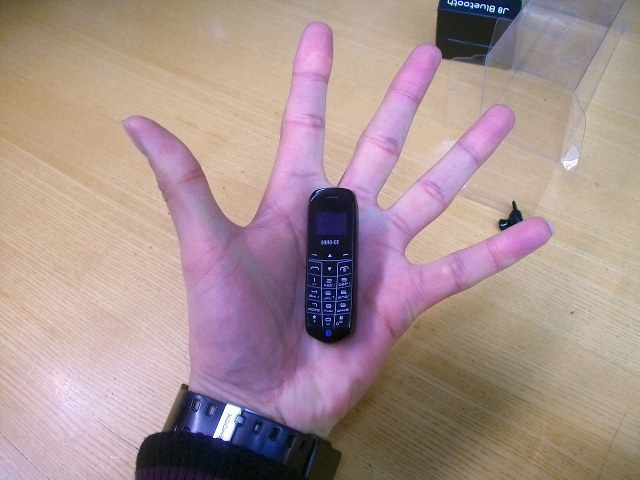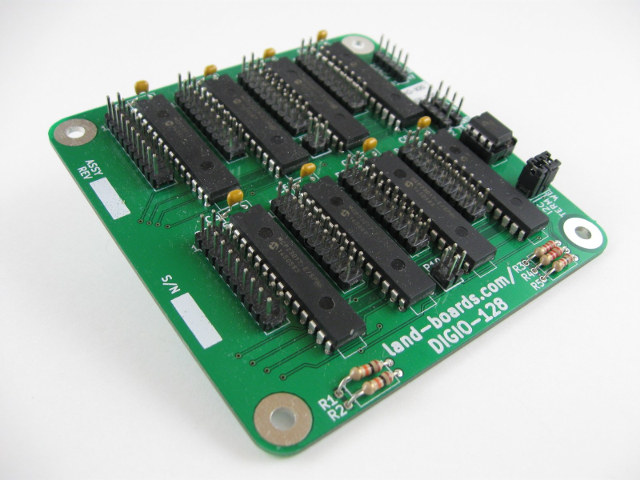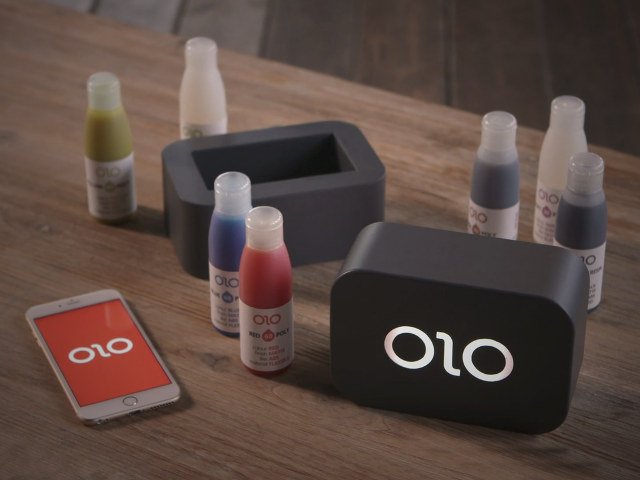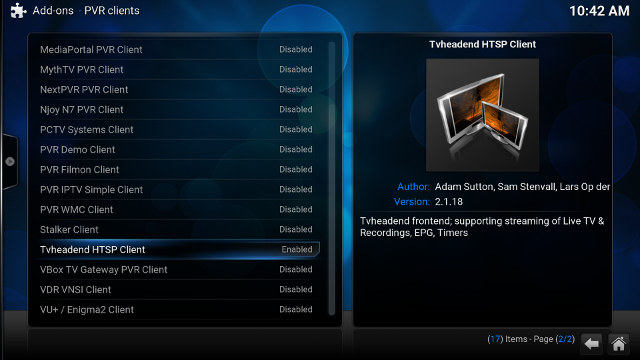Smartphone displays are getting bigger each year, but at the other end of the spectrum, LONG-CZ J8 phone could the world’s smallest at just 68 x 23 x 11 mm, and 18 grams. It takes micro SIM card to make calls, but also doubles (triples?) as a Bluetooth headset and FM Radio. LONG-CZ J2 specifications: Processor – Mediatek Display – 0.6″‘ OLED display Cellular Connectivity – GSM 850/900/1800/1900 via micro SIM card slot Connectivity – Bluetooth 3.0 USB – 1x micro USB port for charging Battery – Capacity TBD; Up to 5 hours talk time, 96 hours standby time. Dimensions – 68 x 23 x 11mm Weight 18g The phones ships with a data cable, a user’s manual in English and Chinese, a strap, one ear loop, and two ear caps. Nine languages are supported: English, French, Italian, Russian, Hindi, Russian, Thai, Portuguese, and Spanish. The phone is not quite […]
MJ Technology Ubuntu Tablets Powered by Intel Atom Cherry Trail Processors Launched on Indiegogo
BQ Aquaris M10 Ubuntu tablets officially launched a few days ago, but it’s you’d like an Ubuntu tablet with better hardware specifications, MJ Technology have now launched their own Ubuntu tablets powered by Intel Atom x5 or x7 quad core processors with 2GB to 4GB RAM, and 64GB, 128GB or 256GB internal storage. There are four models – Tanto, mini Tanto, Wakizashi, and Katana – with the following specs: SoC mini Tanto – Intel Atom x5-Z8300 quad core processor up to 1.84 GHz with Intel HD Gen8 graphics Tanto, Wakizashi, Katana – Intel Atom x7-Z8750 quad core processor up to 2.40 GHz with Intel HD Gen8 graphics System Memory mini Tanto, Tanto – 2GB LPDDR3 Wakizashi, Katana – 4GB LPDDR3 (2x2GB) Storage mini Tanto, Tanto – 64GB eMMC flash + micro SD Slot up to 128GB Wakizashi, Katana – 128 GB eMMC flash or 256GB SSD + micro SD Slot […]
DIGIO-128 Board Adds 128 GPIOs to Your Development Board
If you run out of GPIOs on your board, the easy way is to add an I2C GPIO expander, but those are normally limited to 8 or 16-channels, so Land Boards decided to create a board with 8 IO expanders making it a 128 channel IO expander that works on Raspberry Pi, BeagleBone Black, Arduino, and basically any boards with an I2C hardware or software implementation. DIGIO-128 board specifications: 8x Microchip MCP23017 16-bit I/O expander for up to 128 GPIOs Communication Interface – I2C host interface with 100/400 KHZ operation; 4-pin host interface connector (Ground, Power, Clock, Data) 8x 20-pin 2.54mm pitch connectors with 16 I/Os, 2x VCC, and 2 ground 2x 4-pin interrupt connectors Data Storage – Microchip 24LC024 2K EEPROM with board info. 3.3V or 5V operation Dimensions – 95 x 95 mm You can find out to use the board in the Wiki for code for Raspberry […]
Intel Core m3 Skylake Compute Stick Benchmarked, Tested with Ubuntu 16.04 and Chromium OS
Intel unveiled five new Compute Sticks for 2016, with two Cherry Trail models, and three Skylake Core M models namely STK2M3W64CC and STK2MV64CC based on Intel Core m3-6Y30 processor, as well as STK2MV64CC with a more powerful Core m5-6Y57 vPRO processor. Ian Morrison (Linuxium) managed to get an early sample of STK2M3W64CC running Windows 10 on 4GB RAM and 64GB storage, and posted some benchmarks, as well as results of his experimentations with Ubuntu and Chrome OS in the Intel section of G+ MINI PCs community and his own website. He started by running some standard benchmarks in Windows 10 including CrystalDiskMark (storage performance), Passmark8, and 3DMark, and while the storage performance is underwhelming, the processor is clearly and noticeably faster than Braswell, and Cherry Trail processors in terms of CPU and GPU performance based on comparisons with Tronsmart Ara X5 (x5-Z8300), Kangaroo Mobile Desktop (x5-Z8500), Voyo V3 (x7-Z8700), and […]
$99 OLO 3D Printer Works with Your Smartphone (Crowdfunding)
3D printers for the home usually cost between few hundred dollars to several thousands depending on the model, but OLO 3D Inc. has created a $99 3D printer that prints objects using your smartphone screen and photopolymers (aka daylight resins) that harden with light. The printer itself is divided into two main zones: the bottom printing chamber where you’ll pour the liquid resin, and the top with the motor and four AA batteries that power the device. You’ll first need to install OLO 3D Android or iOS app in your phone, load a 3D object either from a library, created with 3D software, or scanned with apps such as Autodesk 123D Catch, set your phone in airplane mode with WiFi disabled, connect it to the power adapter, place it in a bed at the bottom of OLO printer, and tap on print. Now place the printer bed and printing chamber, […]
Learn How to Build Your Own Open Source Hardware ESP8266 Smartwatch
ESP8266 might be the cheapest WiFi SoC for IoT application available, but it’s not really renowned for its power efficiency, and is often not considered the best choice for battery powered applications. This has not stopped Jeifa from developing a WiFi smartwatch based on the chip, and the 250 mAh battery used in the design is said to be good enough for 1 or 2 days of operation on a charge. Main components of Jeija’s ESP8266 smartwatch: SoC – Espressif ESP8266 with 32Mbit of flash memory Display – SSD1306 OLED Display, 128×64 resolution Connectivity – 802.11 b/g/n WiFi (via ESP8266) Sensor – Invensense MPU-9250 gyroscope, accelerometer, and compass Debugging / Programming – FT232RQ for USB communication Misc RV-3029-C2 Real Time Clock with alarm function, and temperature sensor 3x user buttons Vibration Motor Power 250mAh LiPo battery MCP73831 LiPo charger Dimensions – 35 x 39 x 11mm (board) He designed the […]
SolidRun Introduces Intel Braswell MicroSoMs, and SolidPC Q4 Carrier Board
SolidRun has been making ARM based MicroSoMs – tiny system-on-module – for a while, and integrated them in many of their boards such as HummindBoard Edge or ClearFog Pro, and now the company has packed Intel Braswell processors into 52.8 x 40mm MicroSoMs that can be plugged into SolidPC Q4 carrier board. Two Braswell MicroSoM module have been designed so far: SoM IB8000 and SoM IB3710, which beside having different SoCs, and memory options share most of the same specifications: SoC SoM IB8000 – Intel Atom x5-E8000 quad core processor @ 1.04 / 2.0 GHz with 12EU Intel HD graphics @ 320/600 MHz (5W TDP) SoM IB3710 – Intel Pentium N3710 quad core processor @ 1.6 / 2.56 GHz with 16EU Intel HD graphics 405 @ 400/700 MHz (6W TDP) System Memory SoM IB8000 – 1GB (single channel), 2GB, 4GB or 8GB (dual channel) SoM IB3710 – Up to 8GB (default size) […]
Stream Live TV to Your Computer or Smartphone with U4 Quad Hybrid Android TV Box, Kodi and TVheadend
TVheadend is a streaming server and recorder for Linux, FreeBSD and Android supporting DVB-S, DVB-S2, DVB-C, DVB-T, ATSC, ISDB-T, IPTV, SAT>IP and HDHomeRun as input sources, and while in theory it should be possible to configure any recent Android TV set-top box with digital TV tuners, configuration is complex, and there’s no guarantee the tuner will be recognized. However, the manufacturer of U4 Quad Hybrid has already configured their box to support HTSP clients, so I’ve installed the latest firmware, and given it a try with my Android smartphone running Kodi 15.2 with TVheadend HTSP client, and I could successfully stream live TV (DVB-T2 free-to-air channels) to my smartphone. Once you’ve scanned the channels using DVB-T2 and/or DVB-S2, there’s no other configuration in U4 Quad Hybrid TV box, but you’ll still need to find out your IP address by going to Setup->Network, and WiFi, Ethernet or 3G depending on your […]










